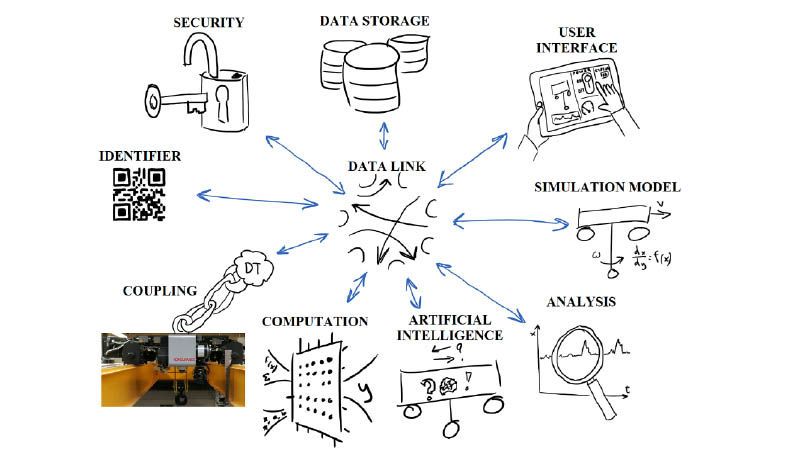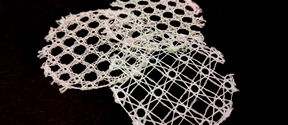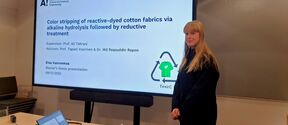Professor Kari Tammi’s group develops digital twins for industrial use

Professor Kari Tammi from the Mechatronics group at the School of Engineering leads the Aalto University team researching digital twins in the European project Machinaide.
Kari, what is a digital twin?
Usually, a digital twin refers to a virtual model of a machine, equipment or even a whole production plant. It’s a digital duplicate that resembles its physical twin within reasonable accuracy.
Benefits from digital twins are huge, especially in industrial product development. With the virtual model we can test and see the results from a very early point onwards. Digital twin can also help better understand the present and forecast future situations.
Are digital twins already mainstream?
Digital twins have been talked about for years and it’s already dropped away from Gartner hype cycle. Maybe even taxi drivers are nowadays familiar with digital twins? An old wisdom says that you better be cautious in the stock market when taxi drivers start giving investment advice.
The quickest companies already have tools ready for digital twins. Good marketing. But I still see that there is a lot to do before we really are ready. At Aalto University we have researched what a digital twin could be. The concept of a digital twin we produced during our first research project has proven to be useful.

What digital twin related questions have you researched?
The groups’ first article was about cybersecurity and how a digital twin is implemented and tested over the network (paper 1). After this we started thinking what the digital twin actually is. We determined it to be an object much like the Internet (paper 2). It was essential to understand that the digital twin needs access to different data sources and analysis tools in order to bring added value. Digital twin is a way to combine information. For me, this was a personal aha moment: Internet of Things (IoT) had found its purpose or the digital twin had found its place in the Internet of Things.
Since it all comes down to efficient and easy transfer of data, we focused on communication, and created ways to link together the different components of a digital twin. Bringing in sensor data to various information systems can be a challenge that must be made as easy as possible in order to ensure the richness of information of the digital twin (paper 3). At the same time we need to develop the linkage between data sources and e.g. measurement and analysis tools (paper 4).
Our newest publication (paper 5) looks at the model of the digital twin and communication technologies we created in industrial use cases. It was written together with our industrial research partners after multiannual cooperation.
All articles are open and free for anyone to read.
Research papers
Paper 1
Heikki Laaki, Yoan Miche, Kari Tammi
Prototyping a Digital Twin for Real Time Remote Control Over Mobile Networks: Application of Remote Surgery
Paper 2
Juuso Autiosalo, Jari Vepsäläinen, Raine Viitala, Kari Tammi
A Feature-Based Framework for Structuring Industrial Digital Twins
Paper 3
Riku Ala-Laurinaho, Juuso Autiosalo, Kari Tammi
Open Sensor Manager for IIoT
Paper 4
Riku Ala-Laurinaho, Juuso Autiosalo, Anna Nikander, Joel Mattila, Kari Tammi
Data Link for the Creation of Digital Twins
Paper 5
Juuso Autiosalo, Riku Ala-Laurinaho, Joel Mattila, Miika Valtonen, Valtteri Peltoranta, Kari Tammi
Towards Integrated Digital Twins for Industrial Products: Case Study on an Overhead Crane
Read more news

Learning Centre opening hours during Christmas and year-end holidays
Thank you for the past year and have a wonderful holiday season!
Smart textiles are reshaping our understanding of materials – and interspecies communication
The PAST-A-BOT research project, funded by the European Research Council (ERC), is developing soft, intelligent textiles that could one day function as rescue robots, sound-sensing agricultural fabrics, or assistive clothing. At the same time, the project aims to rethink the way we approach materials research.
Master’s student showcases efficient color stripping of cotton fabrics
On December 9, master’s thesis student Elsa Vuorenmaa from the Textile Chemistry Group presented the results of her research on color stripping of reactive-dyed cotton fabrics.






